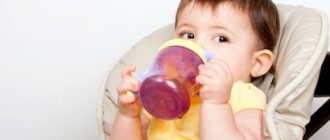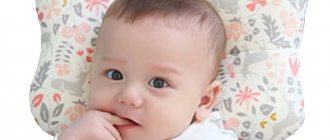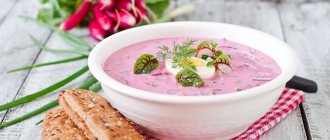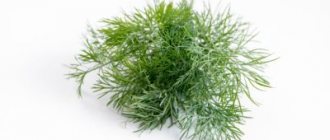Composition of corn
Corn does not contain gluten, so it can be consumed by children who are intolerant to this substance.
Corn contains a huge amount of vitamins and substances beneficial to the child’s body:
- nickel;
- chlorine;
- sulfur;
- copper;
- iodine;
- sodium;
- phosphorus;
- potassium;
- calcium;
- silicon;
- magnesium;
- tocopherol (vit. A);
- ascorbic acid (vit. C);
- routine;
- riboflavin (vit. B2);
- pyridoxine (vit. B6);
- vitamins E, H, D, PP, K;
- linolenic, arachidonic and other unsaturated fatty acids;
- antioxidants;
- essential oils;
- cellulose;
- starch;
- mono- and disaccharides, etc.
Unlike wheat, corn does not contain gluten, making it ideal for gluten-free diets.
Harm and contraindications
Under what circumstances can the “queen of the fields” harm a child?
- Allergy. If a rash, redness or other allergic reactions appear, feeding corn porridge should be stopped.
- Peptic ulcer disease is a strict contraindication to eating corn.
- Increased blood clotting. If a child has a tendency to form blood clots, corn is contraindicated.
- Indigestion. The grains have a hard shell, but a child under two years of age still does not have enough enzymes to digest it. This leads to possible digestive problems: abdominal cramps, increased gas formation, and stool disturbances.
Nutritionist Jennifer McDaniel from the US Academy of Nutrition and Dietetics: “Corn contains fiber that the body does not digest - it simply passes through the intestines. And that’s not a bad thing, because they serve as a breeding ground for beneficial bacteria.”
Microbiologist Paul McNeil:* “Fiber-rich foods, moving through the gastrointestinal tract, injure its epithelium. This damage leads to increased production of mucus, which has emollient and protective properties. Which is definitely good."
But does a child’s body need indigestible dietary fiber in the amount in which it is found in corn? Experts do not give a definite answer.
Parents just have to use common sense and respect age standards.
What are the benefits of corn?
Beneficial features:
- For full development and growth, a child’s body requires many nutrients, which corn is rich in. Dishes made from this cereal crop are satisfying and healthy. The energy value of corn varies among different varieties from 90 to 325 kcal per 100 g.
- Choline in corn normalizes the functioning of the nervous system.
- Silicon strengthens the enamel of growing baby teeth.
- Corn is rich in pectins and fiber, which normalize intestinal motility, restore its microflora and create favorable conditions for the development of lactobacilli.
- This cereal helps to build muscle mass in the child.
- Corn normalizes metabolic processes, strengthens the immune system, and removes waste and toxins from the body.
Corn starch is used not only for food purposes, but also as a filler in baby powders.
At what age can a child be given corn?
Cereals are one of the first to appear in a small child’s diet. They are usually introduced immediately after introducing vegetables, but there are situations when complementary feeding begins with cereals. Among the many cereal crops, corn is one of the most valuable for baby food.
- Corn contains vitamins E, H, A, group B, PP, magnesium, calcium, iodine and many other useful compounds.
- This cereal is rich in pectin and fiber, as well as valuable fats.
- Corn is a grain that does not contain gluten.
- It does not accumulate harmful substances, therefore it is considered an environmentally friendly crop.
- Corn has been noted to have positive effects on digestion and the cardiovascular system.
- It is not recommended to consume corn if you have problems with blood clotting and thrombosis, as well as gastrointestinal diseases.
- Excessive consumption of boiled corn can disrupt the digestive tract.
Corn grits porridge is one of the first to be introduced into children's diets. A breastfed baby is introduced to it at 6-7 months, and an artificial baby - from 5-6 months.
Due to the dense skin of corn kernels, exposure to boiled cobs is carried out only after the appearance of a sufficient number of teeth and good chewing skills. Usually boiled corn is given no earlier than 1.5 years.
Corn is introduced into the child’s diet gradually in small portions. It is offered to the baby in this form:
- Corn porridge. First, it is boiled in water and diluted with breast milk or formula, and later such porridge begins to be cooked in cow’s milk.
- Boiled corn. It is boiled in clean water in season when fresh young cobs are available, or at any other time from cobs frozen in season. The grains are separated and given to the child in small quantities, sometimes adding butter to them. For the first time, a few grains are enough, then half a teaspoon of grains is given, and if the stool and general well-being have not changed, the total amount of product is increased to 100 g. However, it is not recommended to give corn in this form every day.
- Various dishes with boiled corn. It can be added to vegetable stews and soups in crushed form for the little ones and in the form of boiled grains for older children. Corn can also be an ingredient in salad or omelet.
- Baked goods made from corn flour. In recipes for cookies, muffins, or other baked goods, wheat flour can be partially or completely replaced with corn flour.
- Popcorn. It is best to cook it at home yourself from dry grains, since ready-made popcorn often contains a lot of salt and oil.
In the following video fragment of the TV show “Live Healthy” you can learn more about the beneficial properties of corn.
When canned, corn grains retain their beneficial properties, but sugar and some other components that can cause an allergic reaction are added to the product. For this reason, canned corn can only be given to babies over one year old.
When choosing fresh corn for your baby, buy young ears that ripen in the first months of summer. They should not be too large and hard, and the color of the grains should be light. Choose corn with tightly fitting leaves and not dry stigmas.
These cobs can be stored in the refrigerator for a maximum of 3 days.
When buying a canned product for children's meals, give preference to a well-known manufacturer and be sure to check the expiration dates indicated on the can.
Pay attention to the canning time - if the product was closed in the summer, then fresh ears were used, but canned corn in the late fall or winter is usually first dried, then soaked, boiled and packaged. After opening the package, inspect the grains (they should not be wrinkled) and before giving them to your child, be sure to try them
Keep an open jar of canned corn in the refrigerator for no longer than two days.
After opening the package, inspect the grains (they should not be wrinkled) and before giving them to your child, be sure to try them. Keep an open jar of canned corn in the refrigerator for no longer than two days.
Although corn is considered a hypoallergenic cereal, this product can cause an allergic reaction in some children.
In this case, corn is excluded from the baby’s diet and a pediatrician is contacted to select the appropriate treatment.
Is there any harm from corn?
Only eating undercooked or overripe corn cobs can cause harm to a child: in this case, flatulence and bloating develop.
Some diseases and conditions are contraindications to eating dishes made from this cereal:
- individual intolerance, allergic reactions;
- thrombosis;
- increased blood clotting;
- excess body weight;
- exacerbation of gastric ulcer, etc.
Important! Genetically modified corn is prohibited from being used in baby food.
The benefits and harms of corn
Corn can be both beneficial and harmful.
- Its benefit is that it quickly saturates the body, as it contains simple carbohydrates: fructose and sucrose. They can energize and improve brain function;
- The B vitamin contained in corn forms the child’s skeleton and muscles, strengthens the psyche and mental development;
- Thanks to calcium and phosphorus in its composition, this product strengthens the child’s bones and joints;
- Corn's low-calorie fiber content reduces cholesterol levels;
- Corn does not contain gluten, which causes allergies in some children.
- In addition, this product strengthens the immune system and takes part in the fight against viruses and bacteria;
- Corn grains are very dense, this prevents harmful substances from the outside from penetrating inside;
- And another important advantage of corn is that it retains its beneficial properties when cooked. Therefore, there is no need to doubt whether a child can eat corn.
Important! If, after consuming such a product, a rash does appear, it must be urgently removed from the child’s diet. Contraindications to consuming corn are also ulcers, high blood clotting and indigestion. In the body of a child under two years old there are still few enzymes that digest it
This can cause abdominal pain, high gas formation and bowel dysfunction in the child.
Contraindications to consuming corn are also ulcers, high blood clotting and indigestion. In the body of a child under two years old there are still few enzymes that digest it. This can cause abdominal pain, high gas formation and bowel dysfunction in the child.
Also study the important article Stool after the introduction of complementary foods>>>
Corn in children's nutrition
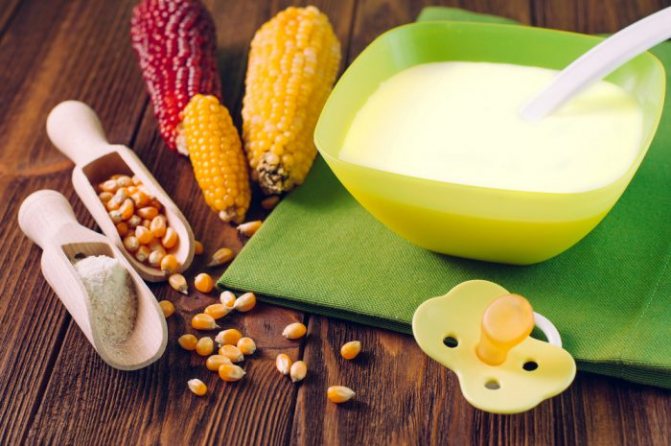
Corn porridge is an excellent option for first feeding. Corn occupies a special place in children's diets. Corn porridge is administered to infants 8-9 months old as the first complementary food after rice and buckwheat groats. This cereal is often included in the menu of children who have difficulty gaining weight and suffer from constipation. Doctors recommend introducing boiled corn into the diet of two to three year old children, when the child is able to chew cereal grains.
Features of eating corn in childhood:
- dishes made from this grain are included in the menu no more than 2-3 times a week;
- For the first feeding, children's ready-made porridges are used; at older ages, porridges are prepared from corn grits;
- fresh cobs are boiled for at least 4 hours;
- In order for the corn to be digested and absorbed by the child’s body, the child must chew the grains thoroughly;
- This grain is added to pureed soups, salads, casseroles, vegetable stews, fresh boiled cobs, corn flour cakes, etc. are eaten.
The benefits of canned corn, as well as corn sticks, flakes, etc., are significantly lower than those of fresh or boiled products. Often, factory-made products contain dyes, sugar and flavorings.
Widely advertised “quick breakfasts” with corn flakes or sticks, although children like them, are much less healthy than simple porridge. If the sticks and flakes do not contain food additives, you can give them to children, but not for breakfast, but during the day, between meals, along with a glass of kefir or a jar of yogurt.
How to introduce corn into complementary foods?
Like other complementary feeding products, corn porridge is added to the baby’s menu in small quantities, gradually building up to a full serving.
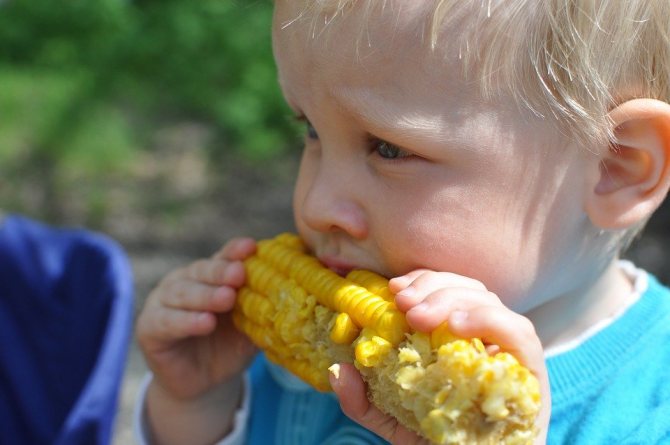
Options for preparing cereal:
- corn porridge - it is prepared first in water and without adding oil, and then for older children it can be cooked in milk;
- boiled corn - can be cooked like fresh corn during its ripening season or frozen, prepared in advance. First, add 2-3 grains to the child’s menu, then a teaspoon of grains, and observe the baby’s condition (pattern of stool, presence of abdominal pain). The total amount permissible for a baby is about 100 grams, but corn should not be given every day.
- Popcorn - It's best to make your own popcorn at home because commercially available popcorn may contain unhealthy flavors and a lot of oil.
- confectionery products from corn flour - you can bake cookies, pies and other desserts for children from this flour or mix it with wheat flour.
- As an addition to other dishes, you can add boiled corn to first and second courses, as well as to salads.
Recipes for preparing dishes for baby food
For cooking, it is important to use only freshly harvested cobs; a few days after harvesting, the sugar in the grains turns into starch.
- Stew. Fresh corn cobs are boiled and the grains are separated. Zucchini and carrots are cut into small cubes and stewed together with corn for 10-15 minutes. Next add finely chopped onion, tomato paste and seasonings to taste. Simmer with added water until the vegetables are ready.
- Porridge. You can use corn grits or grind grains yourself in a coffee grinder. The cereal is poured into boiling water and cooked for about an hour until completely softened. Add butter, fruits, and sugar to taste to the porridge.
- Cream soup. The corn is boiled and separated from the cobs. Mix them with milk and water in a 2:1 ratio and simmer for 10-15 minutes. The contents are crushed using a blender and decorated with herbs.
At what age can you give corn to a child?
At what age can children be given corn - no earlier than 7-9 months, pediatricians recommend. But boiled corn on the cob is offered to a child even later, at the age of two years.
Does a child need corn?
Corn is not a native Russian product. Does the child even need it?
What beneficial properties does it have:
- Corn contains a lot of fiber, which helps the baby’s tummy learn to work properly;
- contains vitamins A (good for skin, vision, immunity), B6 (helps regulate sleep cycles, appetite, helps the development of immunity, with its help nutrients are converted into energy), B3 (reduces cholesterol);
- gluten free;
- It retains its beneficial properties well when cooked; in the form of porridge and boiled cob, it is just as healthy and well digestible.
One of the disadvantages of corn: it should not be eaten by children with high blood clotting.
If you do not take into account the recommendations at what age to give corn, and introduce your baby to it too early, this can cause indigestion and painful gas formation.
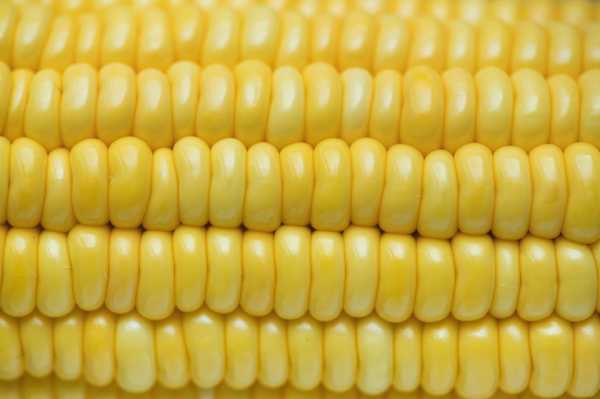
At what age can you have corn in porridge?
If we talk about corn porridge, then it can be introduced into complementary foods during breastfeeding from 6-7 months, for bottle-fed babies a little earlier - from 5-6 months. Introducing corn grits porridge should follow all the rules for introducing complementary foods: gradually and under strict control.
Corn: at what age can it be eaten as porridge?
| 5-6 months | 6-7 months |
The cereal needs to be boiled for a long time, so that it swells, is soft and fluffy.
At what age can a child eat boiled corn?
You can try giving boiled corn to a child at the age when more than 12 teeth have erupted. The grains need to be cracked and chewed thoroughly. Without enough teeth, this is both inconvenient and dangerous; the child may choke. Before 2 years of age, you should not give boiled cobs to a child. In addition to chewing it with his teeth, his stomach needs to digest large pieces of grain. If the grain in the porridge is ground and boiled, then on the cob the body will need to deal with the hard shell of the grain.
To ensure that your experience with boiled corn leaves only pleasant impressions, you need to adhere to certain rules:
- Boil the cob well. If it is damp, it will cause gas and bloating;
- Using a sharp knife, draw a stripe across the kernels on the cob. They will be cut in half, and it will be easier for the child to bite off; besides, there will be no temptation to play with whole grains or stick them in his nose;
- do not give more than one cob per day. It's delicious, but it's a complex food for the stomach that takes time and effort to process.
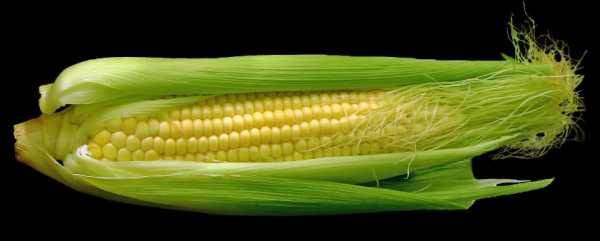
How to choose the right corn on the cob
It is better to prepare boiled corn for your baby yourself so that you know exactly what it is made from and when. Buy cobs at the beginning of summer: at this time they are not so large, they cook well and quickly
Pay attention to the appearance: the leaves should be the same color, hug the cob tightly, and the corn silks should be fresh. There is no need to take cobs that are too hard or too yellow; they are either overripe or stale
The cobs can be frozen and cooked as needed. They cannot be stored in the refrigerator for more than three days.
Cooking features
The preparation is simple, just follow simple rules:
- for cooking, choose cobs of the same size so that they cook evenly;
- wash, remove the leaves from them, rinse again with water;
- If you pre-soak the cobs for an hour, they will cook faster:
- put the corn in boiling water and cook over low heat;
- Cooking time for young corn is 20-30 minutes, for mature corn - 30-40 minutes, old corn can be cooked for up to 2-3 hours.
1641
Corn porridge
If your baby is 7–9 months old and is already familiar with some vegetables and grains, the time has come to introduce him to corn porridge. It will benefit the growing body. During cooking, a significant portion of vitamins and minerals are retained in it. At the same time, the risk of allergies is minimal.
How to enter
Corn porridge is given to the baby after the successful introduction of buckwheat and rice.
Age depends on the baby's type of nutrition. Breastfed babies are offered to try a new type of complementary food at 8–9 months, and bottle-fed babies at 7–8 months.
We introduce the porridge according to the traditional scheme:
- Start with 0.5–1 tsp. in the morning hours.
- Watch your child's reaction carefully.
- If there is no allergy, gradually increase the portion to 200 g (up to a year).
Puree soups, salads, and boiled corn stews are included in the menu no earlier than 2 years.
